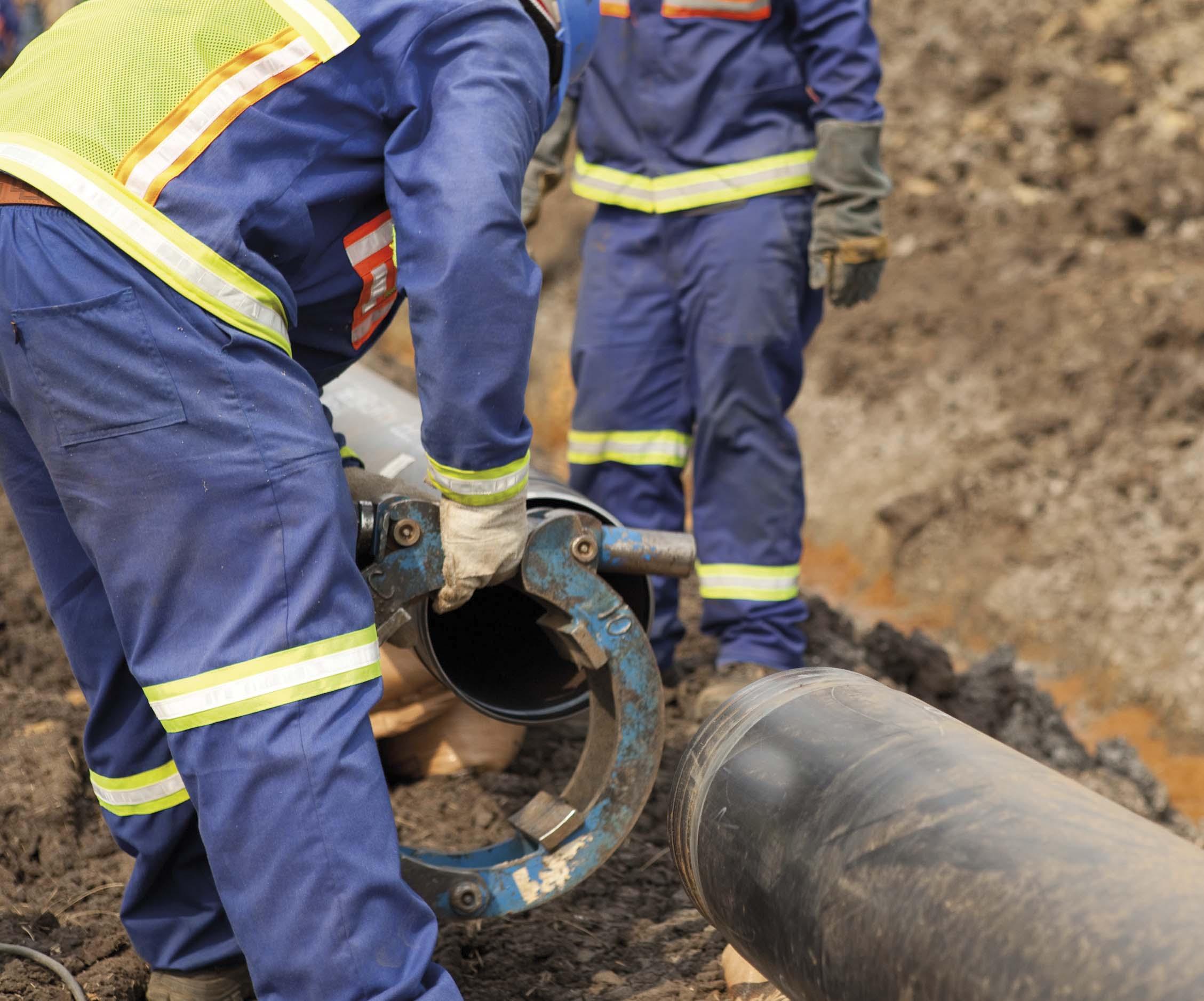
9 minute read
Intelligent inspection
INTELLIGENT INSPECTI N




Dr Christina Wang, ABS, USA, demonstrates how machine learning can be applied to asset coating condition assessments.


Asset management has been a core part of the safety and inspection practices of the oil and gas industry for decades. One of the major steps in the asset management process is inspection and asset condition assessment, which can be supported and improved by using digital technology. There is a new digital transition underway for condition assessments of material coatings.
As the name suggests, asset management is a process that addresses the efficient management of an asset throughout its lifecycle. It includes creating a plan that helps operators reduce costs while increasing the asset’s operational efficiency, safety and reliability. This plan also helps create awareness about the health of an asset, and further supports a shared understanding of what decisions need to be made by management, and when.
So, how can machine learning (ML) support this process? To apply digital technology in inspection, offshore industries are benefiting from an expansion of the availability and use of remote inspection technologies (RITs). Their advantages, including safer, more efficient and lower cost procedures, have seen RITs – such as unmanned aerial vehicles, remotely operated underwater vehicles and robotic crawlers – used widely for inspection of offshore risers, mooring chains, cargo tanks and confined spaces. However, ABS is taking this one step further by looking at how artificial intelligence (AI) modelling can be improved through ML as a way of gaining a complete view of an asset’s health – for example, taking 3D image data sets from laser scans or creating 360˚imaging by stitch processing 2D images together.

A critical task during any inspection is the coating condition assessment. The application of protective coatings to steel surfaces to prevent structures from corroding is well-understood, and the benefits clear in terms of reducing risks during operation.
Proper maintenance of the coating leads to improved asset life extension, as well as reduced lifecycle cost, but the scale of the task is considerable when it comes to maintenance.
The ABS Corrosion Detection application is a digital tool powered by ML for analysis of visual data. Already in service with clients for tank inspections, the tool amply demonstrates the potential of ML in the identification, analysis and detection of corrosion and coating breakdowns as well as quantification of the resulting structural deterioration.
The company believes that there is significant potential for further applications of the technology and is actively exploring the next stage in its development, which includes 3D image assessments. This will enable safer, efficient and comprehensive remote visual inspections of the complete asset.
The next phase of product development is being planned to increase the role of ML for expanded types of structural condition assessments to help address a new set of asset management challenges.
Gaining value from data-driven insight
ML consumes large, complex data sets containing more variables than humans can process. Its data-driven methodology overcomes human limitations such as subjectivity and biases, and provides more consistent results that help operators make better maintenance and replacement decisions.
While visual inspections by properly trained and highly experienced surveyors continue to make up the majority of maintenance surveys, the growing use of RITs provides an opportunity to augment human skills with computing power.
While it is true RITs can provide more convenient access for inspectors evaluating the condition of coatings on more flexible schedules, there are two major issues with the current scope of RITs.
Challenges
RITs are potentially transformational in their approach to offshore inspection but can be challenging for inspectors when identifying potential coating failures, due to the large amount of data that these technologies generate.
The second issue concerns the objectivity of the inspector during the decision-making process. Generally, for coating condition assessments, inspectors need to estimate the size and severity of each coating failure area, some of which are separated sparsely or with complex shapes in the structure, which are difficult to evaluate accurately through visual inspection.
In addition, the accuracy of these assessments is often dependent on the inspector’s previous experience, as well as their familiarity with the different types of structures being inspected. While inspections demand a high level of experience from surveyors, these factors can potentially cause inconsistency during coating inspections.
To overcome these challenges, ABS applies AI in an image recognition tool designed to aid inspectors in reviewing data of coatings applied to marine and offshore assets, and in making coating condition assessments. Phase One of this work focused on ballast tank corrosion and was completed in 2019, while a further development phase of the initiative was completed in 2020, which included the expansion and scope of the data used to train the ML tool. Where the pilot phase, Phase One, delivered a reasonably positive result using only a few hundred images, Phase Two, the development phase, included the processing of more than 30 000 images for enhanced accuracy.
Improving the development of machine learning

Figure 1. Home screen of the ABS Corrosion Detection application.

Figure 2. Users create a project for a specific vessel and compartment.
ABS’s ML-based image recognition corrosion detection tool can automatically analyse input data, identify coating failure areas and grade the coating condition of the structure. Inspectors can use these results as references, just like the assessment scales from a coating guidance, to improve the validity of coating assessments. The tool can also be used during screening inspection processes, where it can be applied as a filter to identify and review areas of corrosion criticality and concern.
The ML algorithm program utilises images taken from various types of marine and offshore assets and it can deal with various kinds of structural components, coating failures, lighting conditions, environment issues and rust.
The problems to be addressed through the use of the image recognition tool, such as
Figure 3. Original image and processed image with corrosion mask overlay.
automatically identifying coating failures or evaluating the coating failure conditions in images or videos, can be considered as computer vision issues. Recently, many applications based on ML technologies have been widely used to deal with computer vision issues such as human face recognition, self-driving cars, medical image analysis and autonomous quality inspection in manufacturing.
Unlike these applications, which have the task of discerning the differences between distinct shapes and forms, the challenge when using ML to assess corrosion on marine and offshore structures is that the targets in the images have complex shapes and colour differences.
To achieve the best possible results, applications such as autonomy and facial recognition use ML algorithms called convolutional neural networks (CNNs), which exhibit strong performance in analysing images and videos. Throughout the development of the Corrosion Detection application, ABS used existing CNN models to evaluate the best models to use.
Interpreting quality data
Besides model selection, another key action to help improve the performance of the CNN was to prepare a large dataset with high-quality data which needed to be properly labelled by subject matter experts. The CNN models used this data in the algorithm training process, applying the decision of subject matter experts to learn the labelled patterns and features, in what is known as a supervised learning approach.
The database used in this part of the study consisted of approximately 32 000 images, taken from different types of structures, most of which are internal tank structures such as water ballast tanks, cargo tanks and oil tanks. The model was trained with a training dataset and was repeatedly tested until an acceptable performance was achieved.
Spatial intelligence
The early development stages of the tool used inputs for image recognition with a single image. This provided a good assessment for the severity of localised coating failures, but ABS is looking to develop a solution with ‘spatial intelligence’ to evaluate the average coating condition of the entire area, such as a whole tank, or eventually an entire asset.
The company is exploring how panoramic 3D modelling and 360˚ imaging technology might provide a solution for survey and inspection work. The tool in planning is a major improvement on the current offering where AI can only process 2D images. This will allow fast processing of a combination of multiple photographic images with overlapping fields of view that can produce a complete picture of large structures, from tanks to topsides, to generate a 3D model. Once the 3D model of the entire structure is created, both the total coating condition and local coating condition can be more easily assessed. Moreover, this model can be combined with the structure of a digital twin and conditioned-based inspection concepts, where a change in coating conditions can be recorded and monitored over time.
Future vision
Various development phases of this project have proven the value of using AI technology in the marine and offshore industry to support trained inspectors with a fast and reliable means to aid their decision-making processes during coating assessment tasks.
Through data tests and case studies, it is proven that the ABS tool can provide reliable reference data and information to inspectors and surveyors in the field. It provides a ‘holistic’ scanning inspection process with RITs, and acts as an electronic coating evaluation guideline to aid inspectors.
These tools and capabilities will continue to be improved. New data can be fed continuously into the training process to improve the capability of the tool and make it even more accurate and reliable.
The company is now looking at how the scope of the tool can be advanced from tank corrosion assessments to other areas of structures, and also to improve coating assessments of other types of structures, including superstructures. The company is applying the technology to help evaluate defects such as fractures, tripping, indentations or other large structural deformations.
Eyeing the benefits
A common question from clients is whether the algorithm is of sufficient quality to accurately assess the problem of coating failure. The accuracy of the ML algorithm for the grading task is exceeding 90% for test data used at the development stage. Comparison studies show the tool can match human judgment in general for the purpose it is developed for.
The ML tool will mark areas of corrosion with colour and give a rating of the coating’s condition, based on which the client can make decisions.
Work continues to make the tool more accurate for assessment of coatings, and conversations with clients are ongoing to customise the tool for their particular applications using images specific to their assets and structures.
In the offshore industry, the ability to avoid unplanned downtime, repair costs and potential environmental damage is critical to success. ML application can offer operators enhanced safety, reduced operating costs and improved uptime. Faced with tougher operating regimes and cost sensitivities, ML application represents an opportunity to stay competitive as the need for companies to take more responsibility for the societies around them and the environment intensifies.


A global industry requires a global publication











